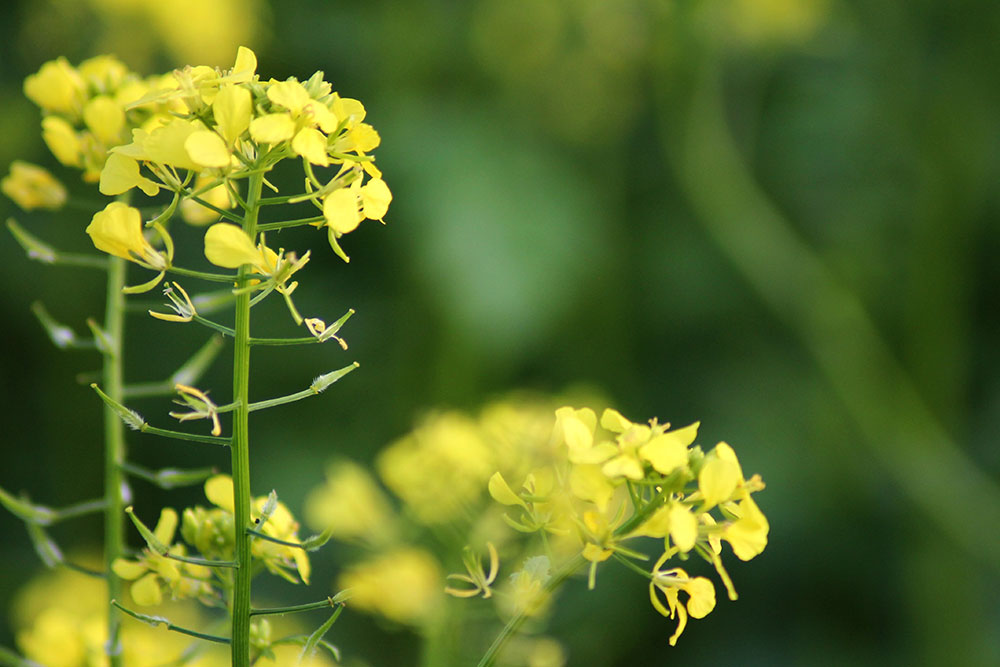Sowing green manures in your vegetable garden: here's how

When you harvest your vegetable garden , you're left with a bare patch of soil. Green manures prevent this soil from becoming bare over the winter – and that has several advantages. This article tells you all about sowing green manures!
Read more below the advertisement
A green manure isn't manure made from animals, but from plants. Green manuring means you sow a crop in your vegetable garden with just one goal: it has to grow. Some varieties die back in winter, while others need to be dug over in spring. But they all improve the soil, so your vegetables get off to a good start in spring.


- Certain types of green manures fix nitrogen from the air and return it to the soil. This is beneficial if a vegetable crop that previously absorbed a lot of nitrogen from the soil (such as many leafy greens and cabbages) was previously grown.
- Nutrients wash away from bare soil when it rains. Ground cover helps the soil retain these nutrients better.
- Green manures suppress weeds , so you'll have less trouble with them in the spring.
- If you have heavy clay soil , the roots of the green manures will help loosen the large clods. This makes the soil easier to work.

- (Naked) snails can hide among the plants and reproduce.
- After turning over the green manure, you should wait about a month before sowing vegetables again. Otherwise, you risk your vegetable seeds not germinating.

You can harvest anywhere. From boxes by the kitchen door and a row of pots on a balcony to a vertical edible wall: there's a perfect vegetable garden plant for every spot. In this special issue of Gardeners' World magazine, we give you the best growing and sowing tips for a small-space vegetable garden.
- Which crops are always suitable?
- Growing and sowing for a year-round harvest
- Tips and advice from experts

Improve the soil in your vegetable garden by sowing green manures. Here's how:

How large is the area you want to sow? Measure it and then check the seed box to see how much you need. If you're sowing different varieties together, mix the seeds thoroughly for the best results.
Prepare the soil by raking it well and removing weeds . Then scatter the seeds evenly over the soil.

Rake the seeds lightly into the soil's surface. For now, protect the seeds from garden birds , as they also enjoy eating them. Let the plants die back naturally over the winter or dig them in in the spring.

Here are some of the best green manures in alphabetical order, with their best sowing time:
- Bee bread ( Phacelia tanacetifolia ) , sow from March to September
- Buckwheat ( Fagopyrum esculentum ), sow from May to September
- Fenugreek ( Trigonella foenum-graecum ), sow in May
- Yellow mustard ( Sinapis alba , see photo), sow between March and September
- Incarnate trefoil ( trifolium incarnatum ), sow in April and between August and September
- Italian ryegrass ( Lolium multiflorum ), sow all year round, preferably between mid-April and November
- Rapeseed ( Brassica napus ), sow in late August, early September
- Lucerne/alfalfa ( Medicago sativa ), sow between August-October or April-May
- Broad bean or field bean ( Vicia faba ), sow from March to mid-April
- Red clover ( Trifolium pratense ), sow from mid-March to mid-September
- Winter rye ( Secale cereale ), sow in August, September and October
- White clover ( Trifolium repens ) , sow from mid-March to mid-September
gardenersworldmagazine


%3Aformat(jpeg)%3Abackground_color(fff)%2Fhttps%253A%252F%252Fwww.metronieuws.nl%252Fwp-content%252Fuploads%252F2025%252F08%252Fwandelen-the-north.jpeg&w=3840&q=100)
%3Aformat(jpeg)%3Abackground_color(fff)%2Fhttps%253A%252F%252Fwww.metronieuws.nl%252Fwp-content%252Fuploads%252F2025%252F08%252FANP-314935010.jpg&w=3840&q=100)

